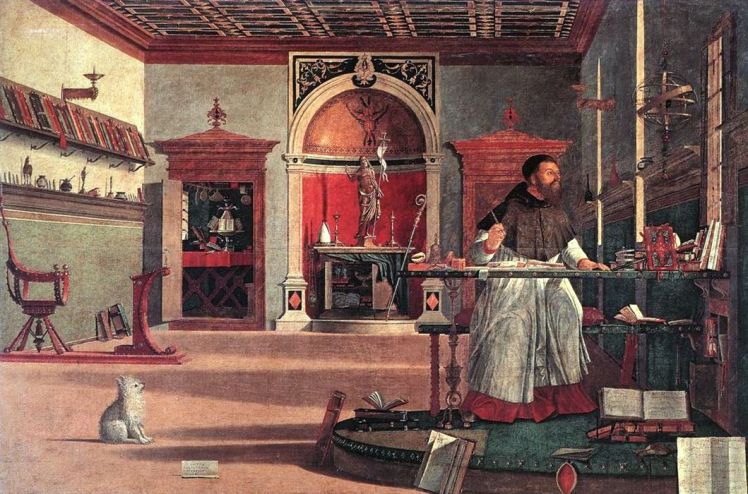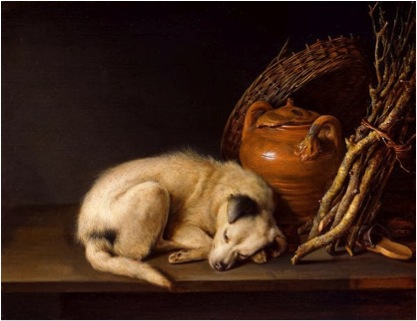‘Learned Forgetfulness’ and a little dog
In ‘Scholars in Households: Refiguring the Learned Habitus, 1480-1550’ (2003) Gadi Algazi, professor of history at the University of Tel Aviv, examines the way scholars developed a trait of ‘Learned Forgetfulness’, a form of intense concentration that makes it possible to ignore one’s immediate surroundings. This was much needed, Algazi argues, because early modern scholars exchanged the celibate lifestyle for a married life and in return had to solve the novel problem of combining study and running a family.
This has lead to the creation of a separate study in which the scholar could retreat and devote all his attention to his scholarly work, having only his books and instruments to keep him company. It became very much the prototypical (self-)image of the scholar, that was copied by some artists as well. It survived in modern times, at least amongst literary scholars: the picture of Albert Verwey that I posted recently fits in perfectly. And what to think of contemporary (literary) scholars that like to depict themselves standing in front of a stuffed bookcase?
When you look closer at the paintings of early modern scholars, like Algazi does in ‘At the Study: Notes on the Production of the Scholarly Self’ (2012), you might notice that the scholar is not always without company. For example, Algazi draws our attention to the presence of the little dog in the study of St. Augustine:
But also in the study of Christine de Pizan and St. Jerome we encounter the little dog (in this latter picture the dog is sleeping next to Jerome’s characteristic symbol, the Lion). Of course one can interpret the presence of the dog in many ways, but seen in the perspective of ‘Learned Forgetfulness’ it functions both as a positive confirmation and as a warning of the calmness and concentration that comes with proper scholarly work. The dog is watching attentively or sleeping peacefully but can awaken anytime, ready to ask immediate attention for its earthly needs. As such the little dog reminds the scholar of the world outside his study.
‘Learned Forgetfulness’ is a trait, but should not become a flight from reality.
On the 27th of November the Huizinga Institute organizes a masterclass by Gadi Algazi. Historicizing the very idea of ‘being a scholar’, Algazi investigates shifts in the meaning of scholarly selfhood that occurred with changing circumstances of life and learning. In the masterclass we probably won’t be talking about little dogs. What we will discuss is the application of concepts of selfhood to the history of science, as well as the question: what can be achieved by shifting attention from practices or products to the person of the scholar?
***
Paintings:
A Scholar in His Study (detail) by Thomas Wyk, around 1616-1677
St. Augustine in his Study by Vittore Carpaccio, 1502
Sleeping Dog by Gerrit Dou, 1650


